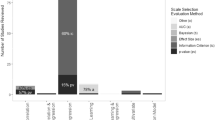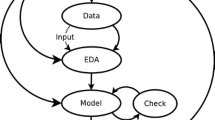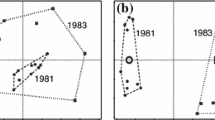Abstract
Nomadism has received surprisingly little attention in the ecological literature, and further work in this area is needed. The results of Woinarski’s reanalysis of our research findings are broadly similar to our own, and they support our original interpretation. However, his presentation is confusing and difficult to interpret.We used an information-theoretic approach to multimodel selection. We a priori defined plausible candidate models relating the variables described in our original paper or Woinarski’s reanalysis to the phenomenon of nomadism. We tested models that investigate nomadism as a function of nectivory, granivory, diet diversity, mixed diet, distance to body mass aggregation edge, mass, interactions between distance to edge and nectivory, distance to edge and mass, mass and nectivory, or mass and the interaction of edge and nectivory. There is consistency in our results across all sets of models, suggesting that mass, distance to body mass aggregation (scale breaks), and diet (nectivory) are all important factors in determining nomadism. In no case was nectivory or any other diet variable supported in a single-variable model. Given the same data and similar results, we and Woinarski reach fundamentally different conclusions. Woinarski views nomadism as an easily understandable result given knowledge of the proper single mechanistic variable, and he discounts interactions with structural features of the landscape and scaling. We conclude that nomadism is a fundamentally complex phenomenon without a single source of causation, and that it is the interaction of species, species attributes, and landscapes that is responsible for nomadic behavior.

Similar content being viewed by others
References
Allen CR, Forys EA, Holling CS. 1999. Body mass patterns predict invasions and extinctions in transforming landscapes. Ecosystems 2:114–21
Allen CR, Saunders DA. 2002. Variability between scales: predictors of nomadism in birds of an Australian Mediterranean-climate ecosystem. Ecosystems 5:348–59
Anderson DR, Burnham KP, Thompson WL. 2000. Null hypothesis testing: problems, prevalence, and an alternative. J Wildl Manage 64:912–23
Blakers M, Davies SJJF, Reilly PN. 1984. The atlas of Australian birds. Carlton, (Aust.): Melbourne University Press
Burnham KP, Anderson DR. 2002. Model selection and multimodel inference: a practical information-theoretic approach, 2nd Edn. Beelin Heidelberg New York: Springer
Gunderson LH, Holling CS. 2002. Panarchy: understanding transformations in human and natural systems. Washington, (DC): Island Press
Holling CS, Allen CR. 2002. Adaptive inference for distinguishing credible from incredible patterns in nature. Ecosystems 5:319–28
Levin SA. 1998. Ecosystems and the biosphere as complex adaptive systems. Ecosystems 1:431–6
Milne BT. 1998. Motivation and benefits of complex systems approaches in ecology. Ecosystems 1:449–56
Saunders DA, Ingram JA. 1995. Birds of southwestern Australia: an atlas of changes in distribution and abundance of the wheatbelt avifauna. Chipping Norton, (Aust.): Surrey Beatty & Sons
Schodde R. 1981. Bird communities of the Australian mallee: composition, derivation, distribution, structure and seasonal cycles. In: di Castri F, Goodall DW, Specht RL, Eds. Mediterranean-type shrublands. New York: Elsevier Scientific. pp 387–415
Acknowledgements
Support was provided by the James S. McDonnell Foundation 21st Century Research Award/Studying Complex Systems (C. R. A). The Nebraska Cooperative Fish and Wildlife Research Unit is jointly supported by a cooperative agreement among the USGS/BRD, the Nebraska Game and Parks Commission, the University of Nebraska, the US Fish and Wildlife Service, and the Wildlife Management Institute. This paper was improved by incorporating comments from E. Blankenship and A. Tyre.
Author information
Authors and Affiliations
Corresponding author
Rights and permissions
About this article
Cite this article
Allen, C.R., Saunders, D.A. Multimodel Inference and the Understanding of Complexity, Discontinuity, and Normadism. Ecosystems 9, 694–699 (2006). https://doi.org/10.1007/s10021-006-0048-7
Received:
Accepted:
Published:
Issue Date:
DOI: https://doi.org/10.1007/s10021-006-0048-7




